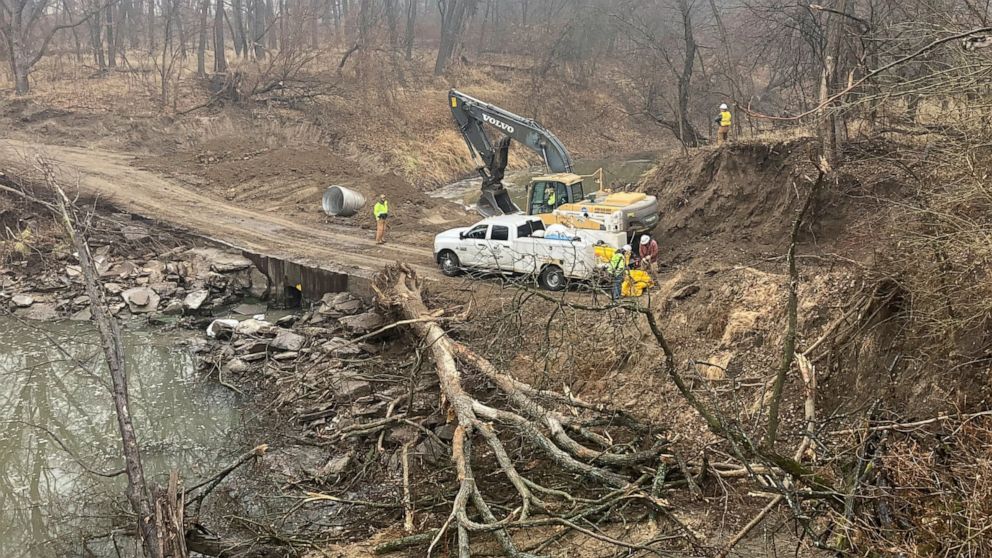TOPEKA, Kan. — A ruptured pipe dumped enough oil this week into a northeastern Kansas creek to nearly fill an Olympic-sized swimming pool, becoming the largest onshore crude pipeline spill in nine years and surpassing all the previous ones on the same pipeline system combined, according to federal data.
The Keystone pipeline spill in a creek running through rural pastureland in Washington County, Kansas, about 150 miles (240 kilometers) northwest of Kansas City, also was the biggest in the system’s history, according to U.S. Department of Transportation data. The operator, Canada-based TC Energy, said the pipeline that runs from Canada to Oklahoma lost about 14,000 barrels, or 588,000 gallons.
The spill raised questions for environmentalists and safety advocates about whether TC Energy should keep a federal government permit that has allowed the pressure inside parts of its Keystone system — including the stretch through Kansas — to exceed the typical maximum permitted levels. With Congress facing a potential debate on reauthorizing regulatory programs, the chair of a House subcommittee on pipeline safety took note of the spill Friday.
A U.S. Government Accountability Office report last year said there had been 22 previous spills along the Keystone system since it began operating in 2010, most of them on TC Energy property and fewer than 20 barrels. The total from those 22 events was a little less than 12,000 barrels, the report said.
“I’m watching this situation closely to learn more about this latest oil leak and inform ways to prevent future releases and protect public safety and the environment,” Democratic U.S. Rep. Donald Payne Jr., of New Jersey, tweeted.
TC Energy and the U.S. Environmental Protection Agency said the spill has been contained. The EPA said the company built an earthen dam across the creek about 4 miles downstream from the pipeline rupture to prevent the oil from moving into larger waterways.
Randy Hubbard, the county’s emergency management director, said the oil traveled only about a quarter mile and there didn’t appear to be any wildlife deaths.
The company said it is doing around-the-clock air-quality checks and other environmental monitoring. It also was using multiple trucks that amount to giant wet vacuums to suck up the oil.
Past Keystone spills have led to outages that lasted about two weeks, and the company said it still is evaluating when it can reopen the system.
The EPA said no…
Click Here to Read the Full Original Article at ABC News: US…

